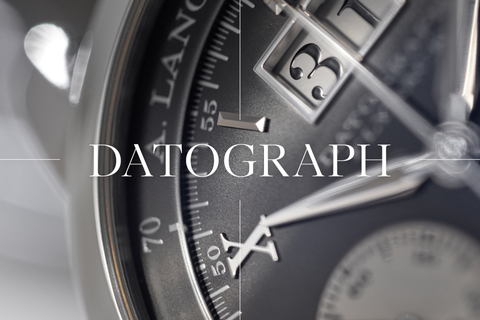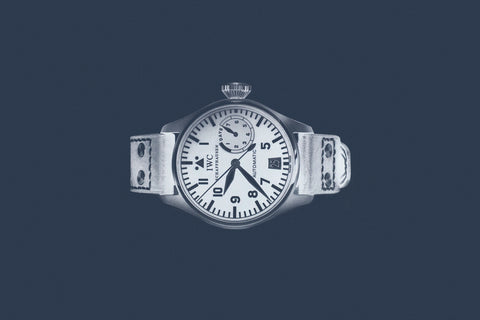This Datograph Perpetual Tourbillon ref. 740.056* in white gold was released in 2019, just a few years after the original series was launched in 2016. An undoubtedly impressive watch, the dial retains the classic Datograph layout while balancing the addition of a perpetual calendar complication. Turning over the watch reveals the beautifully crafted tourbillon, with excellent finishing and decoration that we have come to expect from the brand.


HOW THE SALMON DIAL CAME TO BE
Pink, rose or golden opaline. All of these dial shades can fall under a seemingly catch-all term which has gained something of a cult following of late. Salmon. From elusive vintage Patek Philippe chronographs, to a small handful of Royal Oaks, this unusual colour has long fascinated collectors on account of its scarcity, charm and aesthetic. In more recent times, this interest seems to have reached a new level, with vintage pieces becoming all the more difficult to find and contemporary watches, from large brands and smaller independents alike, integrating this shade into their designs.




There is something instantly appealing about this salmon hue, which seems to speak to collectors in a way few other colours do. After all, there must be a reason why, for such a long time, Patek Philippe held it back for its closest clients or to mark special occasions.
Though decorative arts and more unusual colours had already been used in pocket watches and clocks for generations, we start to see something similar to salmon appear more consistently during the art deco period, both on the wrist and in the pocket. Rather intuitively, the first executions of the colour came in the form of tone-on-tone rose gold watches, that also featured rose gold dials.




Whilst these were never described as salmon by brands or collectors at the time, they do seem to be the point of origin for the shade. After all, it seems only logical that the hue would evolve from a widely used precious metal already present in nature, rather than created by deliberate alchemy. The matching of a rose gold case or bezel, with a similar dial seems like the more obvious point of origin for the choice. Indeed, many of the earliest rose gold dials are only found within cases which feature the same metal, likely as a way to make the design of the piece feel more coherent.




























































































































































































































